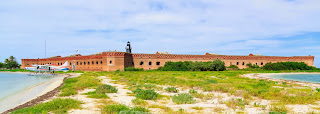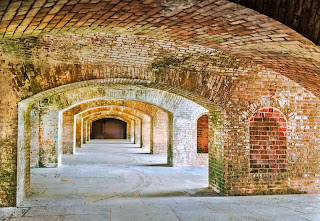Williamsburg is both a college and a tourist town. You can tell the college kids because they will be jogging, riding bicycles or working as interpreters for Colonial Williamsburg…not all of them…just the young ones. The Gen-X tourists are all pushing baby strollers or yelling at kids. Those of the golden age, chasing the tour leader, just walking around looking at maps, or waiting in line to get into one of the Taverns. And then the photographers; always in the way messing up my images.
Every year Colonial Williamsburg decorates for Christmas. Competitions for awards enhance the originality and variety of the wreaths, not two are alike even if placed in the windows and doors of the same building. In the 1970’s I used to go there and photograph the doors and made Christmas Cards with them…it was fun. This alone is worth a visit and the best time is the week before Christmas when visitors are not numerous and parking spaces can be found.
There also window decorations just as elaborate as those in the doors. I should mention that these wreaths are all made with “organic materials” but do not know if they are from GMO certified farms. Yes, the fruits, grasses and greens are real. Lots of expense and work has gone into fabricating these decorations.
The enactors do add a special touch to the place. They are all dressed in the attires of the 17th-18th centuries and speak in the slang of the time (wonder how they know how people sounded back them). They just don’t talk but work as if they were really back in history…they will discuss issues related to the period but if you ask about events that occurred after their historical period, they would say they have no knowledge of such subjects. It is worthwhile spending sometime visiting them, they are patient, courteous and really knowledgeable about the time period they represent.
Time to move on, this is a “must visit place” thanks to the vision of John D, Rockefeller Jr and his wife Aldrich, whose interest and support preserved this historical town. If you are short of time, an hour walk up and down the Duke of Gloucester Street will provide most of that is worth seen.

































































